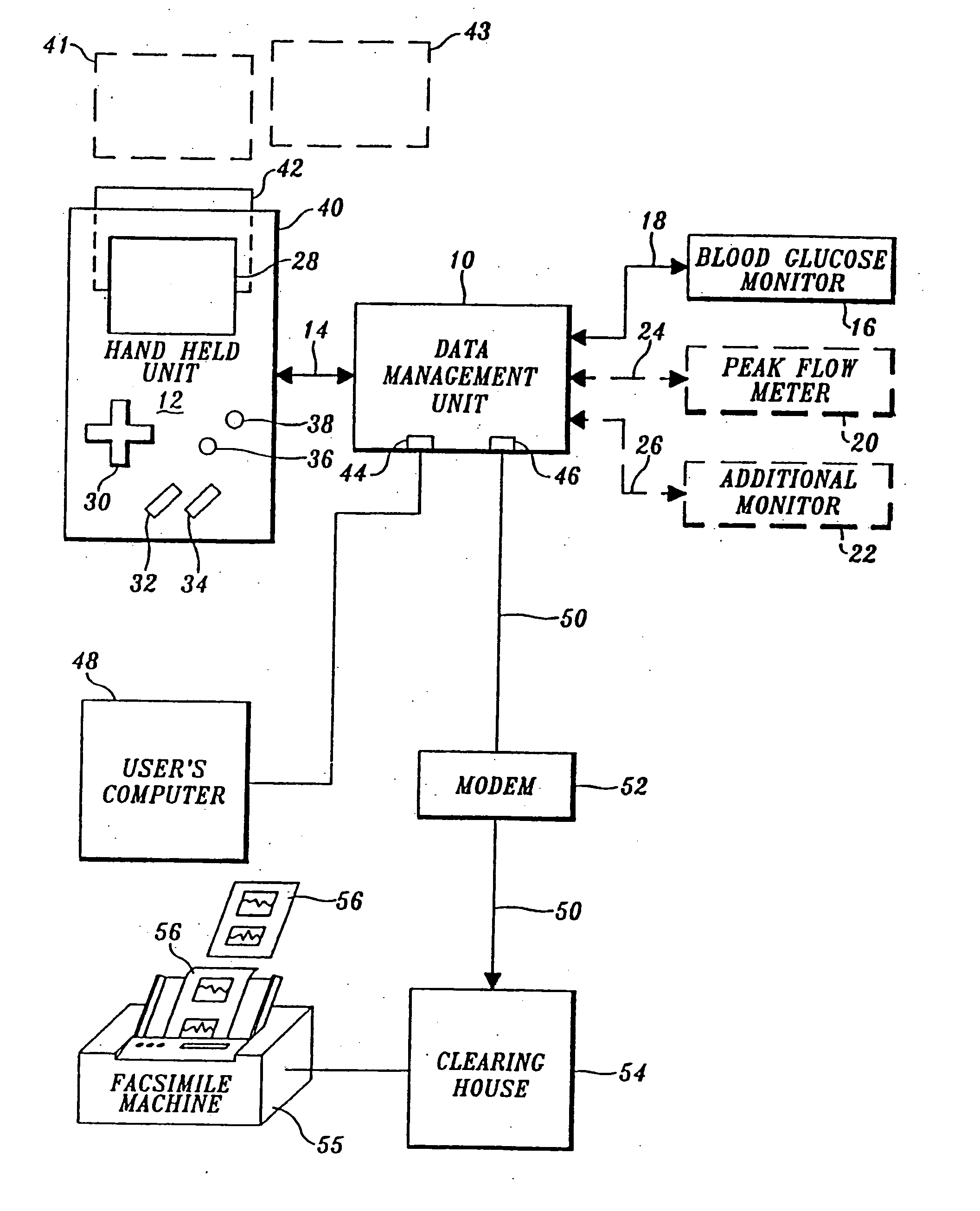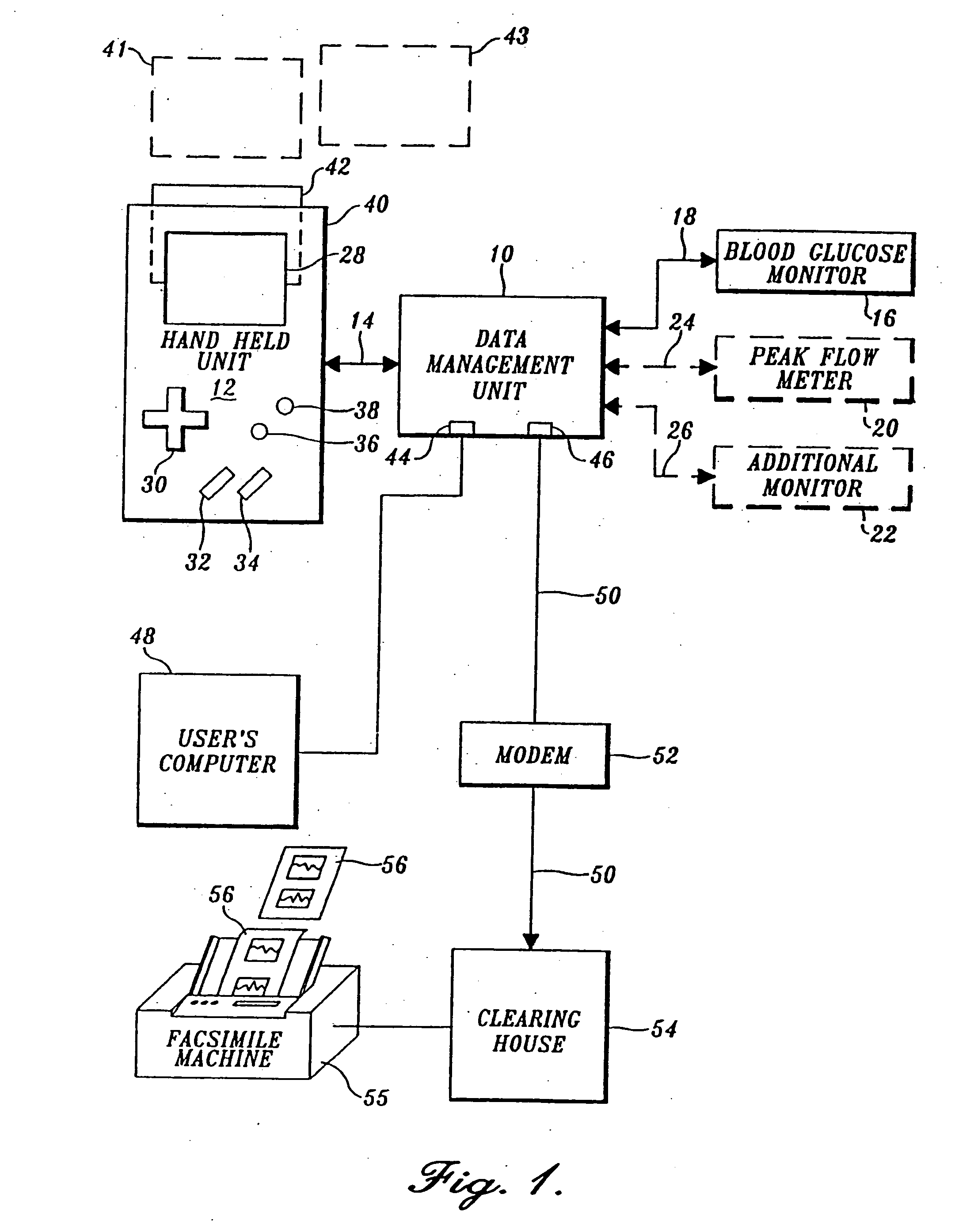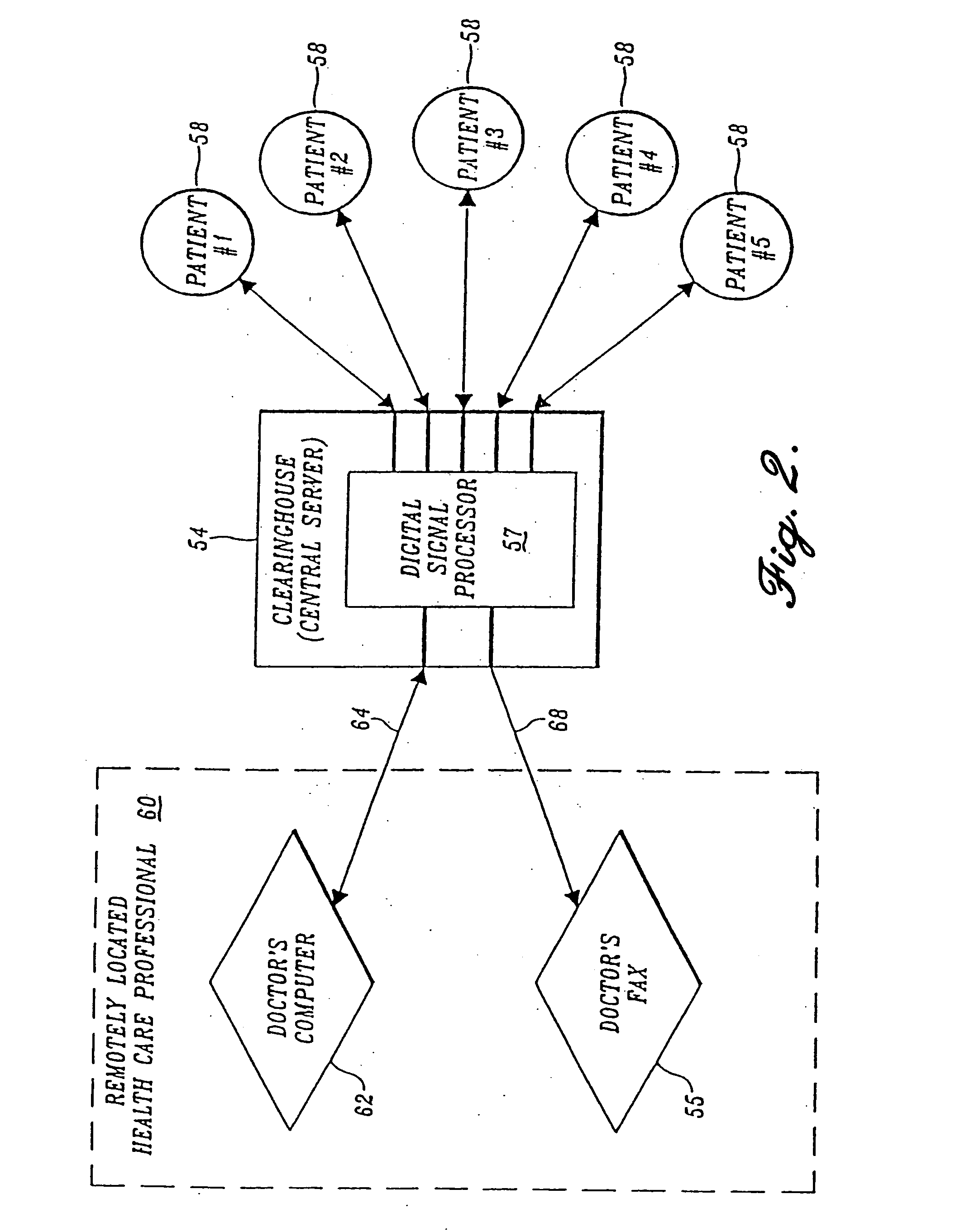Remote health monitoring and maintenance system
a health monitoring and maintenance system technology, applied in the field of remote health monitoring and maintenance systems, can solve the problems of insufficient method of recording information, not only requires subjective judgment of the system user, but also adds to the disadvantage or drawback of subcategories of blood glucose test results, so as to reduce communication costs, facilitate patient querying, and simple and inexpensive
- Summary
- Abstract
- Description
- Claims
- Application Information
AI Technical Summary
Benefits of technology
Problems solved by technology
Method used
Image
Examples
second embodiment
[0158] The script programs of the second embodiment are similar to the script program shown in FIGS. 17A-17B, except that each display command is replaced by a speech synthesis command and each input command is replaced by a speech recognition command. Referring to FIG. 26, the speech synthesis commands are executed by microcontroller 2122 to synthesize the queries, response choices, and prompts through speaker 2072. The speech recognition commands are executed by microcontroller 2122 to recognize responses spoken into microphone 2118.
[0159] For example, to ask the patient how lie or she feels and record a response, microcontroller 2122 first executes a speech synthesis command to synthesize through speaker 2072“How do you feel? Please answer with one of the following responses: very bad, bad, good, or very good.” Next, microcontroller 2122 executes a speech recognition command to recognize the response spoken into microphone 2118. The recognized response is stored in memory 2080 an...
third embodiment
[0161] The third embodiment also shows how the queries and statements may be customized to each individual by merging personal data with the script programs, much like a standard mail merge application. Referring to FIG. 27, personal data relating to each individual is preferably stored in look-up table 2046 of database 2038. By way of example, the data may include each individual's name, the name of each individual's physician, test results, appointment dates, or any other desired data. As in the preferred embodiment, database 2038 also stores generic script programs 2040 created by script generator 2050.
[0162] Server 2018 includes a data merge program 2055 for merging the data stored in table 2046 with generic script programs 2040. Data merge program 2055 is designed to retrieve selected data from table 2046 and to insert the data into statements in generic script programs 2040, thus creating custom script programs 2041. Each custom script program 2041 contains statements which ar...
PUM
| Property | Measurement | Unit |
|---|---|---|
| time | aaaaa | aaaaa |
| time | aaaaa | aaaaa |
| time | aaaaa | aaaaa |
Abstract
Description
Claims
Application Information
 Login to View More
Login to View More - R&D
- Intellectual Property
- Life Sciences
- Materials
- Tech Scout
- Unparalleled Data Quality
- Higher Quality Content
- 60% Fewer Hallucinations
Browse by: Latest US Patents, China's latest patents, Technical Efficacy Thesaurus, Application Domain, Technology Topic, Popular Technical Reports.
© 2025 PatSnap. All rights reserved.Legal|Privacy policy|Modern Slavery Act Transparency Statement|Sitemap|About US| Contact US: help@patsnap.com



